Historical Info
History of the Irish Hills
The Irish Hills - Written by Dan Cherry
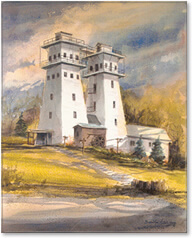
As immigration into the newly-christened Michigan state territory reached its peak, a small knot of Irish immigrants, some seeking new life in the United States, others fleeing the ongoing Potato Famine of 1846, called a small portion of northern Lenawee County home. The rolling hills and crystal lakes, it is said, reminded them of their home country and they acquired that tangible reminder of Ireland. Names like Kelly, Killarney, Brighton and Monaghan can be found on modern maps, a tribute to the original area in which they resided; the 1 ½ square-mile area around white is now St. Joseph Shrine.
The Irish Hills, as it became known, was transformed from mostly farms and orchards to a tourist destination by the early 1920’s. In 1924, the Irish Hills Towers were constructed; by 1930 the shrine and the Stations of the Cross became places of popular, quiet reflection. The Irish Hills quickly embodied the entire lake and hills region and to this day is a sought-out place of quiet beauty that the original Irish immigrants found so appealing.

Historical Routes
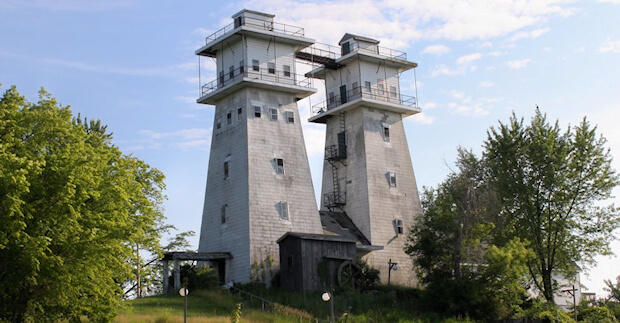
Centuries in the making, the US-12 Heritage Trail is a road connecting man, animals, commerce, culture, and nature. Bridging southern Michigan's east and west shores, the US-12 Heritage Trail is an unconventional destination that encourages the traveler to journey its winding roads, meet its people, explore its places, and uncover its hidden treasures.
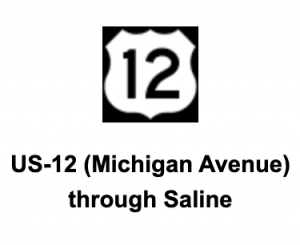
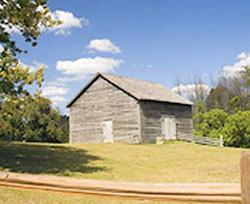 US-12 (Michigan Avenue) through Saline follows the route of the historic Sauk Trail, a Native American trail that was to later become the Detroit and Chicago Road. Orange Risdon the founder of Saline was the original surveyor for the Detroit and Chicago Road. The portion of Michigan Avenue in Saline designated as a Heritage Route has several historic attractions. The old Schuyler Mill (now Weller's) is located near the intersection of US-12 and the Saline River. Henry Ford converted this Mill in 1937 to a soybean processing plant for the manufacture of auto paint and auto parts. The Saline downtown area is historically significant and vibrant. Oakwood Cemetery, Curtiss Mansion and the Rentschler Farm museum are other important attractions.
US-12 (Michigan Avenue) through Saline follows the route of the historic Sauk Trail, a Native American trail that was to later become the Detroit and Chicago Road. Orange Risdon the founder of Saline was the original surveyor for the Detroit and Chicago Road. The portion of Michigan Avenue in Saline designated as a Heritage Route has several historic attractions. The old Schuyler Mill (now Weller's) is located near the intersection of US-12 and the Saline River. Henry Ford converted this Mill in 1937 to a soybean processing plant for the manufacture of auto paint and auto parts. The Saline downtown area is historically significant and vibrant. Oakwood Cemetery, Curtiss Mansion and the Rentschler Farm museum are other important attractions.
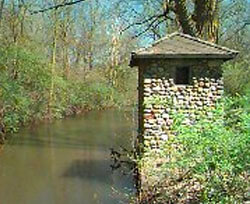
 US-12 (Michigan Avenue) through Saline follows the route of the historic Sauk Trail, a Native American trail that was to later become the Detroit and Chicago Road. Orange Risdon the founder of Saline was the original surveyor for the Detroit and Chicago Road. The portion of Michigan Avenue in Saline designated as a Heritage Route has several historic attractions. The old Schuyler Mill (now Weller's) is located near the intersection of US-12 and the Saline River. Henry Ford converted this Mill in 1937 to a soybean processing plant for the manufacture of auto paint and auto parts. The Saline downtown area is historically significant and vibrant. Oakwood Cemetery, Curtiss Mansion and the Rentschler Farm museum are other important attractions.
US-12 (Michigan Avenue) through Saline follows the route of the historic Sauk Trail, a Native American trail that was to later become the Detroit and Chicago Road. Orange Risdon the founder of Saline was the original surveyor for the Detroit and Chicago Road. The portion of Michigan Avenue in Saline designated as a Heritage Route has several historic attractions. The old Schuyler Mill (now Weller's) is located near the intersection of US-12 and the Saline River. Henry Ford converted this Mill in 1937 to a soybean processing plant for the manufacture of auto paint and auto parts. The Saline downtown area is historically significant and vibrant. Oakwood Cemetery, Curtiss Mansion and the Rentschler Farm museum are other important attractions.
